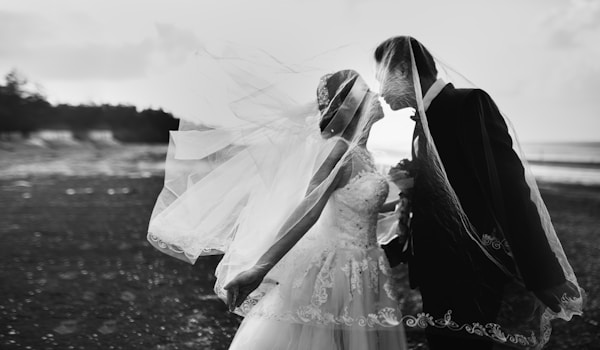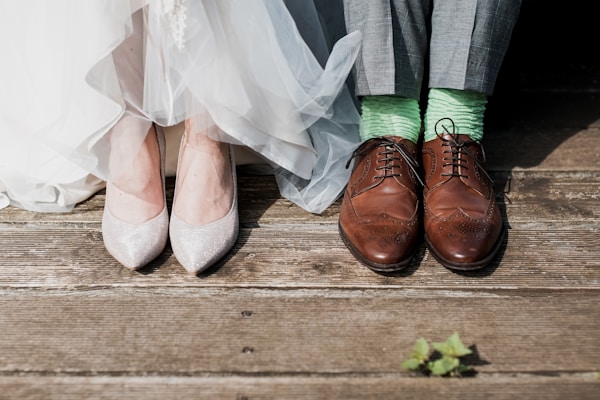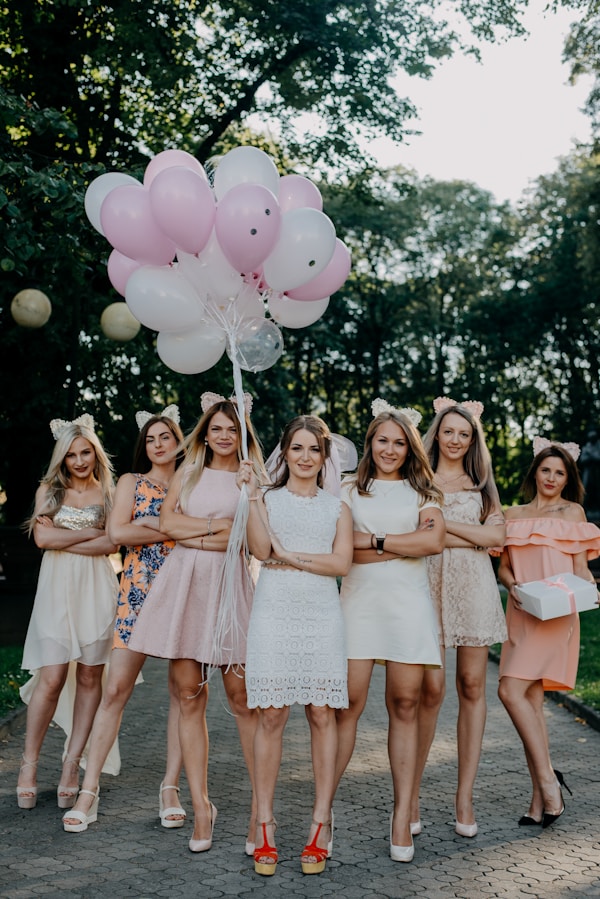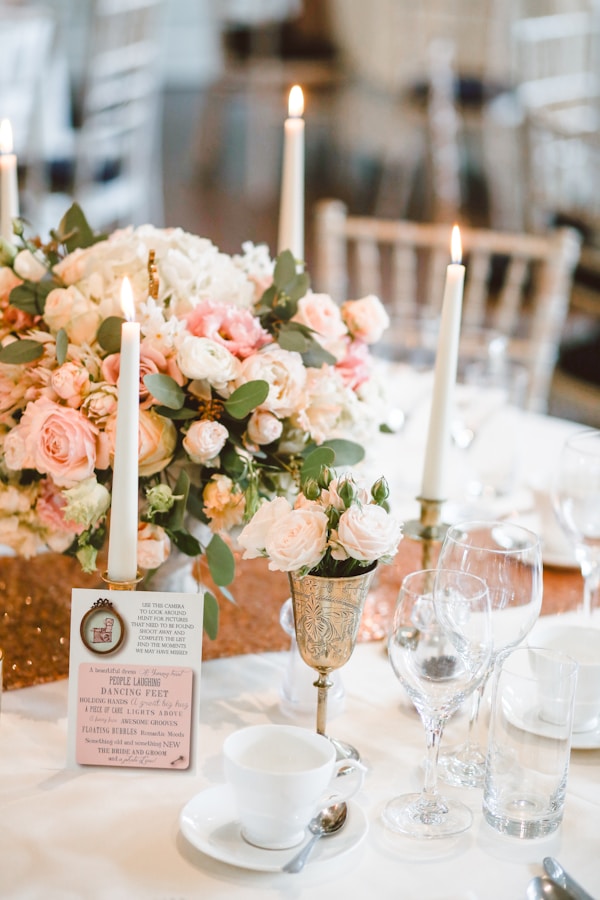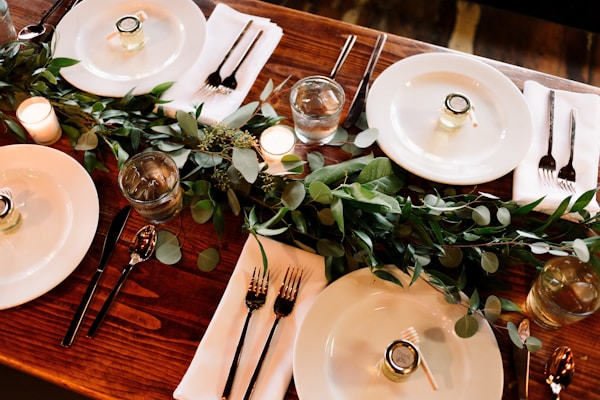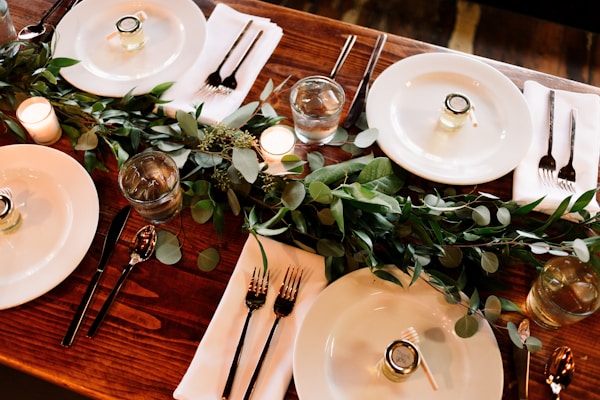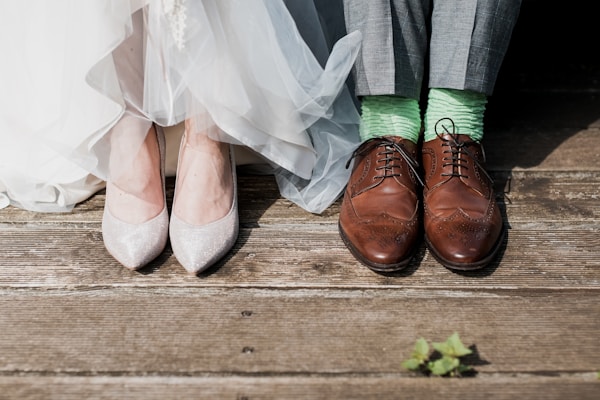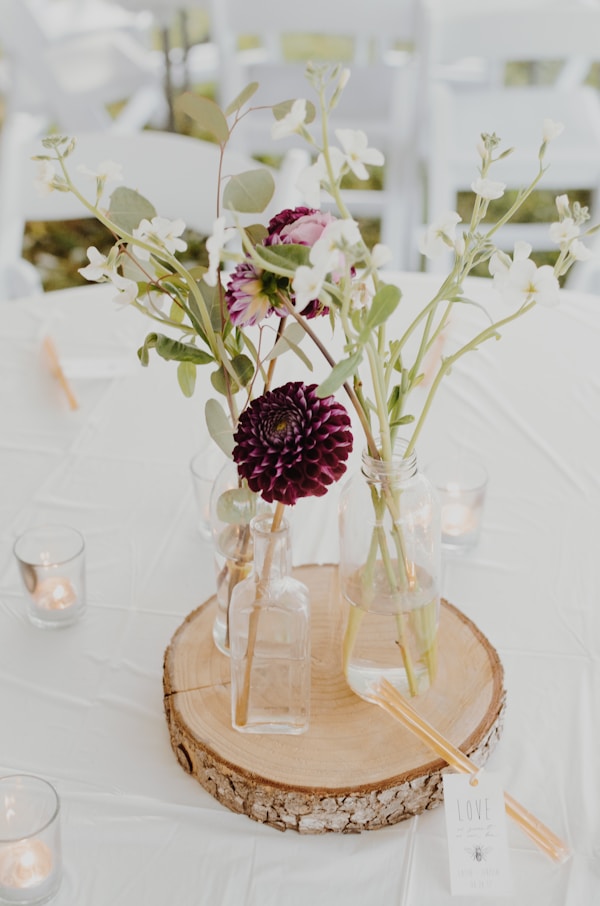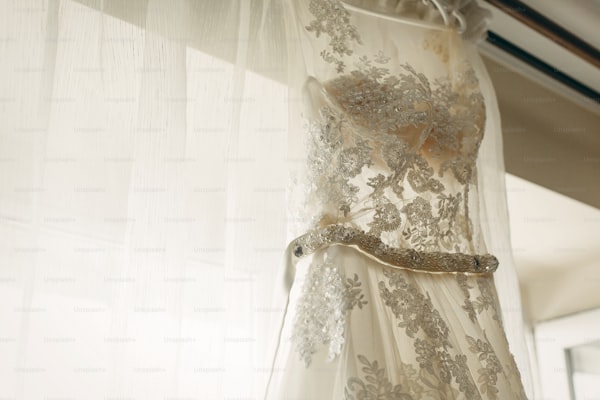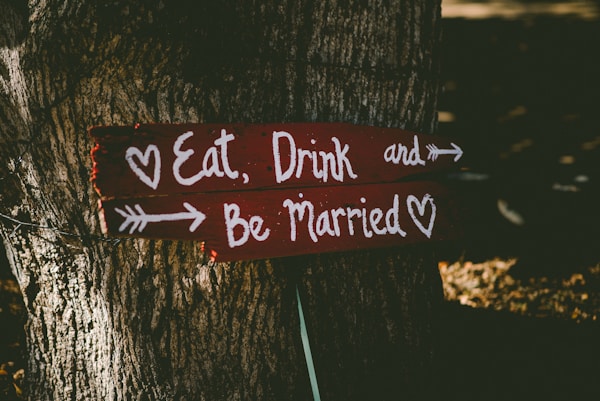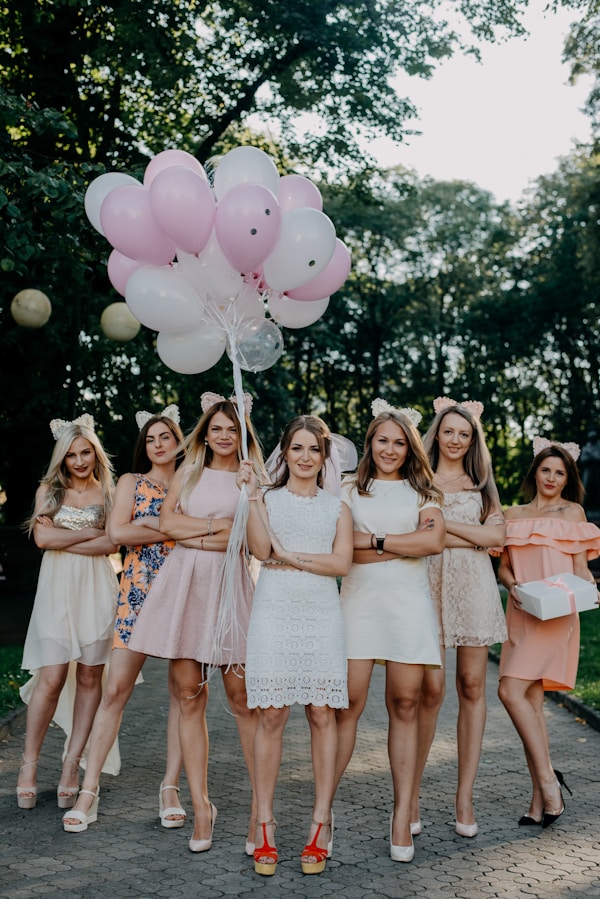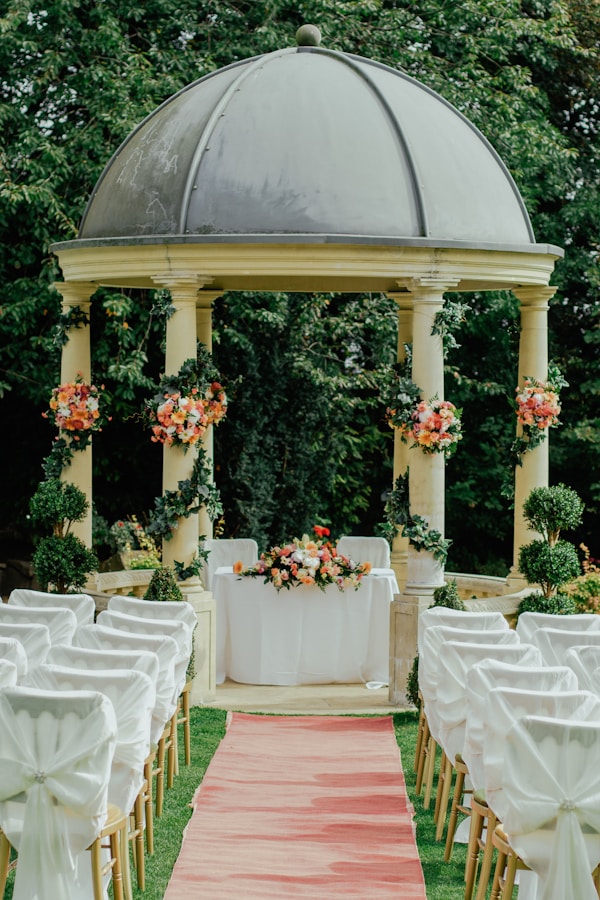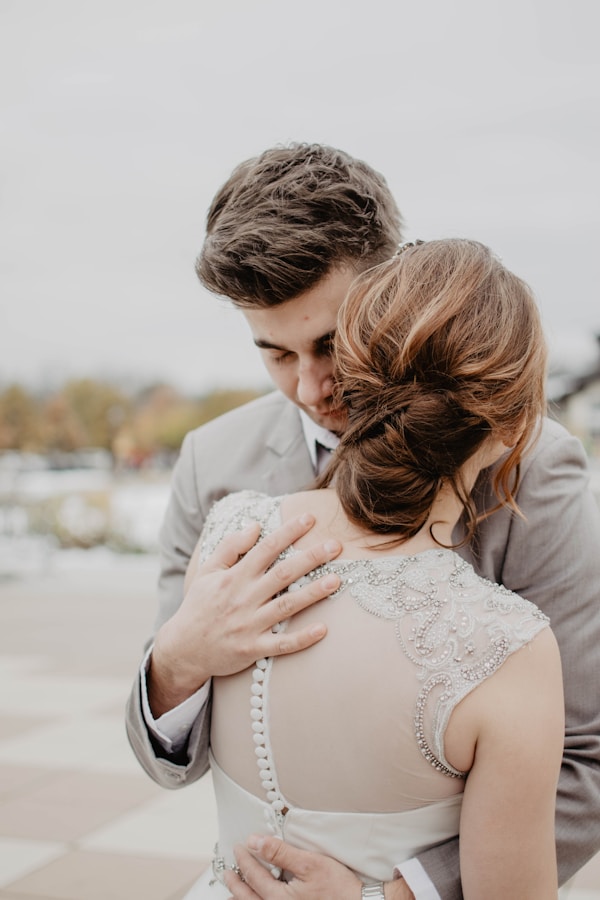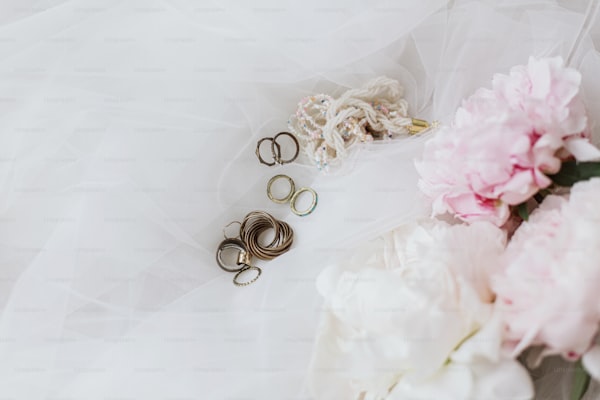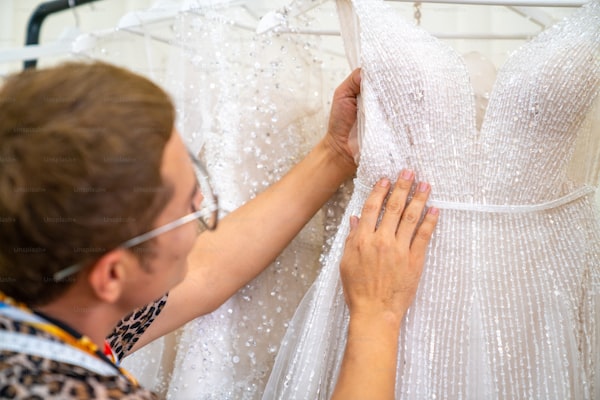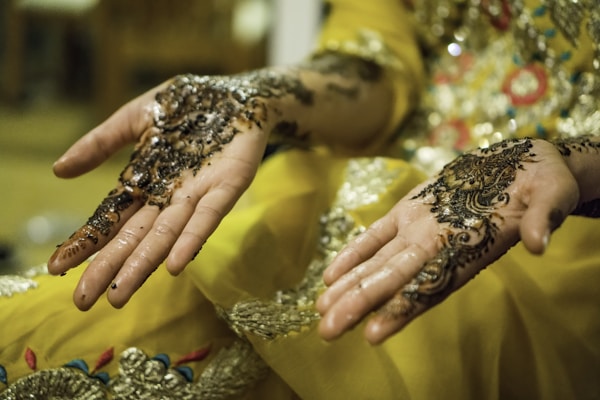Unveiling Elegance: Techniques for Creating a Wedding Dress with a Tailored Waist and Layered Skirt
When it comes to selecting the perfect wedding dress, the nuances of design can make all the difference. Among the various styles available, a wedding dress featuring a tailored waist and layered skirt holds a special place in the hearts of brides worldwide. But what techniques are used to create this stunning look? In this article, we will explore the intricate methods involved in fashioning such a dress, delving into the artistry and craftsmanship that define the bridal fashion industry.Understanding the Elements of DesignA tailored waist and layered skirt are two significant features that can transform a wedding dress from ordinary to extraordinary. Each component contributes to the overall silhouette and aesthetic appeal of the gown.The Tailored WaistThe tailored waist is a hallmark of sophistication, providing structure and definition to the dress. The following techniques are essential in achieving this feature:1. Dart ManipulationDarts are triangular folds sewn into the fabric to shape it around the body. By strategically placing darts in the bodice, designers can create a fitted appearance around the waist. This not only enhances the bride's silhouette but also ensures comfort and ease of movement.2. BoningIncorporating boning into the dress’s bodice can enhance durability and structure. Boning, typically made of plastic or steel, is sewn into the seams of the dress to provide support, especially in strapless designs. This technique helps maintain the tailored look wh...
Ensuring the Perfect Fit for a Wedding Dress with Intricate Beadwork
Understanding the Importance of Fit and Comfort in Wedding DressesWeddings are one of the most significant events in a person's life, and choosing the perfect wedding dress is often at the top of the list. A dress adorned with intricate beadwork can be stunning and create a lasting visual impact. However, how do you ensure that your wedding dress fits well and remains comfortable throughout an event that can last for hours? In this article, we’ll explore best practices, tips, and advice on achieving the perfect fit with comfortable beadwork.The Challenges of Beadwork in Wedding DressesWedding dresses that feature intricate beadwork can pose several challenges when it comes to fit and comfort. Here are some factors to consider: Weight: Beadwork can add considerable weight to a dress, which may affect how it hangs and fits on the body. Movement: The added complexity of beadwork can restrict movement, making it hard to dance or move comfortably. Friction: Depending on the design, beadwork may create friction against the skin, leading to discomfort over time.How to Ensure Your Wedding Dress Fits Perfectly1. Start with Accurate MeasurementsThe foundation of a well-fitting wedding dress begins with accurate measurements. It is advisable to have a professional tailor take your measurements. Key areas to measure include:Measurement AreaDescriptionBustMeasure around the fullest part of your bust.WaistMeasure around the narrowest part of your abdomen.HipsMeasure around the ful...
Creating a Stunning Wedding Dress with a High-Low Hemline: Methods and Intricate Details
Introduction to High-Low Hemline Wedding DressesWhen it comes to wedding dresses, fashion trends continuously evolve. One striking trend that has captured the hearts of many brides is the high-low hemline. This style, featuring a silhouette that is shorter in the front and longer in the back, exudes elegance and playfulness. But how do designers create such stunning pieces, replete with intricately detailed craftsmanship? In this article, we delve into the methods used to create high-low hemline wedding dresses and the captivating details that make these gowns unforgettable.Understanding the High-Low HemlineThe high-low hemline is not just a fashion statement; it represents modernity while maintaining bridal elegance. This asymmetrical design provides brides with the opportunity to showcase both their heels and the beautiful intricacies of the gown. Additionally, the design often allows for a fuller skirt in the back, creating a dramatic effect as the bride walks down the aisle.Design Inspiration and SketchingThe foundation of any wedding dress begins with inspiration and sketches. Designers draw ideas from a variety of sources, including: Nature and its timeless beauty Art movements, such as Baroque or Art Deco Historical bridal wear from various cultures Contemporary fashion trendsOnce an idea is formed, detailed sketches are created, outlining the design, fabric choices, and unique details that will adorn the dress.Selection of FabricsThe type of fabric chosen ...
Mastering the Art of Wedding Dress Production: A Guide to Detailed Embroidery and Beadwork
Producing a wedding dress is not just about fabric, stitching, and design; it is an intricate process that requires attention to detail, creativity, and excellent management skills. When it comes to wedding dresses adorned with elaborate embroidery and shimmering beadwork, the stakes are even higher. This article will explore effective strategies on how do you manage the production of wedding dresses with detailed embroidery and beadwork, ensuring every piece is a work of art that resonates with brides everywhere.The Importance of Detailed Embroidery and Beadwork in Wedding Dresses Wedding dresses symbolize elegance, romance, and individuality. The intricate details of embroidery and beadwork elevate a dress from simple to breathtaking. They allow designers to express their artistic vision and enable brides to showcase their personality. However, the production process can become increasingly complex due to the various techniques, materials, and time required. Understanding the significance of these elements helps in devising an effective management strategy.Key Components of Wedding Dress Production ComponentDescriptionDesign ConceptThe initial sketches, color palettes, and fabric choices.Fabric SelectionChoosing quality materials that complement embroidery and beadwork.TechniquesDeciding on the types of embroidery (hand-stitched, machine-stitched) and beadwork styles.Production TimelineCreating a schedule for each phase of production to ensure timely delivery.Quality Contr...
Unveiling the Art of Creating a Unique Wedding Dress: Techniques for a Stunning Silhouette
What Techniques are Used to Create a Wedding Dress with a Unique Silhouette and Flowing Design?Creating a wedding dress that stands out requires a combination of artistic design, meticulous craftsmanship, and an understanding of fabric behavior. A wedding dress with a unique silhouette and flowing design not only enhances the bride's beauty but also creates lasting memories in photographs. This article delves into the various techniques designers use to achieve these breathtaking looks.Understanding Silhouettes in Wedding Dress DesignThe silhouette of a wedding dress is crucial in determining the overall style and feel of the gown. Traditional silhouettes include A-line, ball gown, sheath, and mermaid. However, modern bridal fashion encourages creativity, leading to innovative shapes and forms. Here are some popular silhouettes:SilhouetteDescriptionBest ForA-lineFitted at the hips and gradually flares out to the hem, resembling the letter "A."All body typesBall GownCharacterized by a full skirt and fitted bodice, ideal for a fairy-tale look.Hourglass figuresSheathFits closely to the body from the neckline to the hem, accentuating curves.Petite or slender figuresMermaidTight-fitting until the knee, where it flares out, creating dramatic movement.Curvy figuresTechniques for Achieving Unique SilhouettesDesigners use various techniques to create unique silhouettes. Here are some of the most significant methods:1. Fabric ManipulationThe choice of fabric plays a pivotal role in how...
Creating the Perfect Wedding Dress: A Guide to Crafting an Intricate Lace Bodice and Satin Skirt
Designing Your Dream Wedding DressWhen it comes to one of the most significant days in a person's life, choosing the perfect wedding dress is crucial. Many brides dream of a gown that features an intricate lace bodice paired with a luxurious satin skirt. This combination not only exudes elegance but also allows for personal expression through design details and craftsmanship. In this article, we will explore how to create a stunning wedding dress that embodies these desirable features.Understanding the Fabric ChoicesThe first step in creating your wedding dress is selecting the right fabrics. An intricate lace bodice typically requires delicate lace materials, while the satin skirt benefits from a heavier, more structured fabric.FabricDescriptionLaceA delicate fabric with intricate patterns, perfect for the bodice to provide a romantic look.SatinA smooth fabric that drapes beautifully, ideal for the skirt to create an elegant silhouette.TulleThis lightweight netting can be used for overlays or skirts to add volume and drama.Choosing the Right Design ElementsAfter selecting your fabrics, the next step is to design the dress. Consider the following elements:Neckline: Options range from sweethearts to off-the-shoulder or high necks. Your choice influences the overall style.Silhouette: Determine if you want an A-line, ball gown, or sheath style, as this will dictate the flow of the satin skirt.Detailing: Think about incorporating beading, embroidery, or sequins on the lace to enh...
Designing the Perfect Wedding Dress: Methods for High Necklines and Dramatic Sleeves
Weddings are a momentous occasion, and the wedding dress holds a special place in the hearts of brides and grooms alike. One increasingly popular style is the wedding dress with a high neckline and dramatic sleeves. This design choice not only exudes elegance but also offers a unique make for a variety of body types and wedding themes. In this comprehensive guide, we will explore the methods used for designing such wedding dresses while optimizing our insights for SEO. Whether you are a bride-to-be, a designer, or simply a lover of fashion, there’s something for everyone in this piece. The Rise of High Necklines and Dramatic Sleeves In recent years, wedding fashion has witnessed a significant transformation, with high necklines and dramatic sleeves taking center stage. Brides are choosing these styles for various reasons: Elegance: A high neckline provides a sophisticated touch, enhancing the overall sophistication of the bridal look. Flattering Fit: This style can be very flattering, elongating the neck and creating an appealing silhouette. Coverage: For brides looking for a more conservative look, high necklines offer excellent coverage without sacrificing style. Versatility: Dramatic sleeves can be designed in numerous styles — from bishop sleeves to puffed designs — allowing for creative expression. Design Methods for High Necklines Designing a wedding dress with a high neckline involves careful consideration of several factors, including fabric, silhouette,...
Ultimate Guide to Ensuring Your Wedding Dress with a Beaded Waistline Stays in Place
How to Ensure a Wedding Dress with a Beaded Waistline Stays Secure Planning your dream wedding is an exciting journey, and one of the most important aspects of this special day is finding the perfect wedding dress. For many brides, a gown adorned with a beaded waistline is a popular choice, adding both elegance and sparkle. However, maintaining the placement and fit of your dress can pose challenges, especially as you navigate through various activities on your wedding day. In this article, we’ll explore the best practices to keep your beaded waistline secure and ensure you look fabulous without any wardrobe malfunctions. Understanding the Beaded Waistline A beaded waistline can enhance the silhouette and add a touch of luxury to any wedding dress. However, due to its design and weight, it may also shift throughout the day. To prevent this, it’s vital to focus on the construction, fit, and styling of your gown. Factors to Consider Before Purchase When selecting a wedding dress, consider the following factors that contribute to a secure fit: Dress Material: Fabrics like satin, tulle, or organza behave differently. Heavier materials may support the beaded waistline better than lighter ones. Dress Structure: A dress with built-in bustles or corsets will naturally hold the weight of the beads more effectively. Size and Fit: Ensuring the gown fits perfectly at your waist is crucial. Misjudged sizing can make the dress more prone to slipping. Strategies to Keep Your Dress in Pla...
Crafting the Perfect Wedding Dress: Techniques for a Fitted Bodice and Cascading Train
Introduction to Wedding Dress DesignWhen it comes to wedding attire, the wedding dress holds a special place in the hearts of brides all over the world. One of the most sought-after designs is the dress featuring a fitted bodice and a cascading train. This combination embodies elegance, romance, and timeless beauty. However, creating such a dress requires expert techniques and meticulous attention to detail. In this article, we will explore the various techniques used to design a wedding dress with a fitted bodice and cascading train.Understanding the Basics of Wedding Dress ConstructionThe construction of a wedding dress involves several layers of fabric and intricate designs. A fitted bodice, designed to accentuate the bride's silhouette, requires specific techniques to ensure both comfort and style. Meanwhile, a cascading train adds drama and grace to the overall look. The following techniques are commonly used in the creation of these beautiful gowns:1. Fabric SelectionChoosing the right fabric is crucial when designing a wedding dress. For a fitted bodice, fabrics such as satin, silk, and lace are popular due to their ability to hold shape and provide structure. A cascading train can be enhanced with lighter materials like chiffon or tulle that flow gracefully behind the bride, creating a stunning visual effect.2. Pattern MakingBefore sewing begins, designers create patterns that serve as templates for the various components of the dress. The fitted bodice pattern is mad...
Mastering Wedding Dress Alterations: A Guide to Fitted Bodices and Voluminous Skirts
Handling Alterations for a Wedding Dress with a Voluminous Skirt and Fitted BodiceWeddings are a beautiful celebration of love, and one of the most significant aspects of a wedding is the bride's dress. The dress sets the tone for the entire event, and finding the perfect combination of style and fit is essential. But what happens when your dream dress comes with a voluminous skirt and a fitted bodice? In this comprehensive guide, we will explore how to handle alterations for this specific style of wedding dress, ensuring you look stunning on your big day.Understanding the Structure of Wedding DressesWedding dresses can vary vastly in design and silhouette, but the combination of a voluminous skirt and fitted bodice is one of the most popular choices among brides. This design juxtaposes a structured upper body with a flowing skirt, creating a traditional yet modern look. Here’s a quick overview of the elements involved:ElementDescriptionFitted BodiceA snug upper portion of the gown that contours to the bride’s body, highlighting her figure.Voluminous SkirtA full and flowing skirt that adds drama and elegance, often made from layers of tulle or organza.AlterationsAdjustments made by a tailor to ensure proper fit and comfort, addressing length, width, and overall proportions.Why Alterations Are EssentialEven when buying a wedding dress that is the correct size, alterations may still be necessary. Each bride's body is unique, and ready-to-wear dresses may not fit you perfectly. ...
Mastering Vintage Elegance: Best Practices for Producing a Wedding Dress with a Lace Overlay
When it comes to designing the perfect wedding dress, few styles evoke the timeless beauty and sophistication of a vintage-inspired lace overlay. This enchanting trend has captured the hearts of brides worldwide, offering a unique blend of classical charm and modern elegance. However, creating a wedding dress that can compete in today's market requires a deep understanding of both aesthetics and practicality. In this article, we will explore the best practices for producing a wedding dress with a vintage-inspired lace overlay, considering design, fabric selection, sewing techniques, and styling options.Understanding Vintage Lace OverlaysBefore we dive into the best practices, it's essential to gain insight into what makes vintage lace overlays so special. Lace has been used in bridal wear since the 16th century, and its intricate designs and delicate textures contribute to a dreamy, romantic aesthetic. A vintage-inspired lace overlay can take various forms—from delicate floral patterns to bold geometric shapes—and can be layered over different fabrics to achieve stunning results.Choosing the Right LaceThe first step in producing a wedding dress with a vintage-inspired lace overlay is selecting the right lace fabric. Consider the following tips:Fabric Type: Opt for high-quality lace materials such as Chantilly, Alençon, or Guipure, each offering unique patterns and textural qualities.Color: Traditional lace is often white or ivory, but don't shy away from adding a hint of colo...
Understanding the Art of Creating a Wedding Dress with a High-Low Hemline and Layered Design
IntroductionThe world of wedding fashion is constantly evolving, and one trend that has captured the hearts of brides-to-be is the high-low hemline wedding dress with a layered design. This unique style blends elegance with a modern twist, providing both comfort and a stunning visual appeal. But what methods are specifically used to create such captivating dresses? In this comprehensive guide, we will delve into the various techniques, materials, and creative ideas that contribute to the making of these beautiful gowns.The Appeal of High-Low HemlinesHigh-low hemlines allow brides to showcase their footwear while maintaining the graceful silhouette that traditional wedding dresses offer. The shorter front hemline is perfect for those looking for a playful yet sophisticated aesthetic. Additionally, this design works wonders in ensuring that the bride can move freely, especially during outdoor ceremonies or receptions where dancing is involved.Key Techniques for Crafting High-Low HemlinesCreating a high-low hemline is not just about cutting the fabric at different lengths. The following methods are frequently employed by designers to achieve the perfect look: Asymmetrical Cutting: This technique involves an intentional variance in length, which can be tailored to the bride's height and preference. A designer will often create a muslin prototype to test the proportions before cutting into the final fabric. Layering: High-low dresses often feature layers that add dimension a...
Mastering the Art of Managing Wedding Dress Production with Custom Embroidery and Embellishments
IntroductionCreating the perfect wedding dress is a process that intertwines artistry, careful planning, and outstanding craftsmanship. Particularly, when it comes to custom embroidery and embellishments, the management of production becomes a delicate balance of creativity and logistics. In this article, we'll explore how to effectively manage the production of a wedding dress that features custom embroidery and embellishments, ensuring that every bride's vision is realized flawlessly.The Importance of Custom Embroidery and EmbellishmentsWedding dresses are not merely garments; they are a reflection of the bride's personality and a symbol of one of the most significant days of her life. Custom embroidery and embellishments allow brides to express their individuality and style in a way that is personal and unique. This segment is dedicated to understanding why these details matter.Why Customization MattersCustomization in wedding dress production serves several purposes:Personal Touch: Every bride desires a unique experience, and custom embroidery allows for personalization that can include initials, dates, or even family heirlooms.Aesthetic Appeal: Embellishments such as lace, beads, and sequins elevate the beauty of the dress, making it a stunning choice for the wedding day.Emotional Connection: Bridal gowns with custom details often hold sentimental value, linking a bride with her family history and traditions.Managing Production: Step-by-Step ApproachManaging the producti...
The Art of Designing a Wedding Dress with a Dramatic Keyhole Back
Understanding Keyhole Back Wedding DressesWhen it comes to wedding dresses, the design can make or break the elegance and overall impression of the big day. Among the various styles trending in modern bridal fashion, a wedding dress with a dramatic keyhole back has gained significant popularity. The allure of this design not only adds a touch of sophistication but also highlights the bride’s features beautifully. In this article, we will explore the techniques used in designing such exquisite wedding gowns.What is a Keyhole Back?A keyhole back refers to a specific cut-out design at the back of a dress that resembles a keyhole. This design element typically features a rounded or oval shape that is often embellished or left open for a chic look. A dramatic keyhole back can transform a simple wedding dress into a statement piece, drawing attention without compromising modesty.Techniques Used in Designing a Dramatic Keyhole Back Wedding DressCreating a wedding dress with a striking keyhole back involves various techniques and considerations. Designers often focus on the following aspects:1. Fabric SelectionChoosing the right fabric is crucial for achieving the desired look and feel. Common fabrics used for wedding dresses include:Fabric TypeFeaturesSatinLuxurious sheen, smooth textureLaceDelicate, intricate patterns; adds romanceTulleLightweight, airy; creates a fairy tale effectChiffonSoft, drapes beautifully; often used for layering2. Architectural DesignArchitectural design pl...
Creating a Romantic Wedding Dress: Methods for Chiffon Overlays and Beaded Details
IntroductionChoosing the perfect wedding dress is a significant part of any bride’s journey, and a romantic gown often embodies dreamy elements like chiffon overlays and intricate beaded details. In this article, we will explore the various methods used to create a wedding dress featuring these beautiful elements. We will also delve into the considerations brides should keep in mind when selecting their ideal dress, including styles, materials, and customization options.Understanding Chiffon and Its Romantic AppealChiffon is a lightweight, sheer fabric that adds an ethereal quality to wedding dresses. Its flowing nature makes it perfect for creating glamorous overlays that flutter with movement. The softness of chiffon, combined with its translucence, allows for creative layering and unique silhouettes.Brides often choose chiffon overlays to achieve a romantic aesthetic. This fabric can create a dreamy effect when layered over a more structured gown, adding a whimsical feel while allowing elements of the underlying dress to peek through.Beaded Details: Adding Sparkle and EleganceBeaded details on a wedding dress can transform a simple design into a show-stopping masterpiece. Beading techniques may include the use of pearls, crystals, and sequins, each contributing to a gown’s sparkle and elegance. These embellishments can highlight certain areas of the dress, such as the bodice, sleeves, or hemline, effectively drawing the eye and creating visual interest.Methods Used to Crea...
Mastering the Art: Techniques for Creating a Vintage Lace and Satin Wedding Dress
The Allure of Vintage Lace and Satin in Wedding DressesA wedding dress is not just a garment; it symbolizes love, commitment, and the beginning of a new chapter in life. Among the myriad of styles, a wedding dress crafted with vintage lace and satin holds a timeless charm that appeals to many brides. In this article, we’ll explore the various techniques used to create a stunning wedding dress that combines vintage lace with satin. Let’s embark on this exquisite journey of bridal fashion!The Fusion of Vintage Lace and SatinThe combination of vintage lace and satin in a wedding dress creates an exquisite visual and tactile experience. Vintage lace adds a delicate, romantic touch, while satin exudes elegance and sophistication. This duality ensures that a bride not only captures classic beauty but also feels luxurious on her special day.Understanding the Beauty of Vintage LaceWhen discussing vintage lace, it’s vital to understand its origins and qualities. Vintage lace can include diverse styles such as Chantilly, Alençon, or Guipure. Each type possesses unique characteristics that contribute to the overall design of the gown. For example:Lace TypeCharacteristicsBest UsesChantillySoft and fine, with intricate floral patterns.Overlays, sleeves, and veils.AlençonHeavier with a raised cord, offering both texture and design.Base layer fabric for full gowns.GuipureNon-stitched lace, often in motifs, gives a bold look.Accents and embellishments.The Role of Satin in Wedding Dress Desig...
Mastering the Art of Wedding Dress Production: Elegant Trains and Intricate Embroidery
Introduction to Wedding Dress ProductionCreating the perfect wedding dress is a blend of artistry, precision, and passion. One of the most sought-after designs among brides is the wedding dress with a stunning elegant train and intricate embroidery. This style not only enhances the beauty of the dress but also adds depth and uniqueness to the overall bridal look. In this article, we will explore how to manage the production of such wedding dresses, focusing on the materials, techniques, and considerations essential in bringing a bride’s dream ensemble to life.Understanding the Elements of a Wedding DressBefore diving into the production management, it’s crucial to understand the main components that contribute to the beauty of a wedding dress. Two of the most significant elements are: Elegant Train: The train is the fabric that extends from the back of the dress, creating a dramatic effect. Intricate Embroidery: This includes detailed stitching and designs that embellish the dress and make it unique.Planning the Production ProcessSuccessfully managing the production of a wedding dress involves meticulous planning. This includes the following steps:1. Design ConceptualizationThe process starts with understanding the bride’s vision. Sketching various designs, considering different styles of trains, and discussing the type of embroidery that resonates with the bride’s age and theme are essential. You may want to for ideas.2. Selecting Quality MaterialsThe choice of fabric...
Designing a Wedding Dress with a High Neckline and Flowing Sleeves: Methods and Techniques Unveiled
When it comes to wedding dresses, the design can significantly influence the overall theme and atmosphere of the big day. One popular style that has gained traction in recent years is the wedding dress featuring a high neckline and flowing sleeves. This design not only exudes elegance and sophistication but also complements various body types. In this article, we will explore the methods and techniques used to create such stunning wedding dresses, delve into the various materials and styles, and offer some tips for future brides looking to embrace this beautiful design.Understanding the Elements: High Necklines and Flowing SleevesThe combination of a high neckline and flowing sleeves creates a distinct silhouette that appeals to many brides. High necklines can vary from a modest boat neck to a chic jewel neck, while flowing sleeves can take multiple forms, such as bell sleeves or bishop sleeves. The right combination can enhance your figure and elevate the overall appearance of the dress. Let's look at some of the methods used to design these elements.1. Choosing the Right FabricFabric selection plays a crucial role in the design and final look of a wedding dress. For a dress with a high neckline and flowing sleeves, you may want to consider the following fabrics:FabricCharacteristicsBest forChiffonLightweight, flowy, and semi-transparentCreating soft flowing sleevesLaceTextured and intricate patternsAdd elegance and vintage charmSatinLuxurious and shinyStructured high neckli...
Mastering Alterations for a Low Back Wedding Dress with Intricate Lace Details
How to Handle Alterations for a Wedding Dress with a Low Back and Intricate Lace DetailsPlanning a wedding is a beautiful journey, but it can also be filled with challenges, particularly when it comes to selecting and fitting the perfect wedding dress. One of the most popular styles today features low backs and intricate lace details, which add elegance and charm. However, these elements can present unique challenges during alterations. This article aims to give you in-depth guidance on how to handle alterations for such a stunning piece.Understanding the Complexity of Low Back Wedding DressesBefore diving into the alteration process, it is vital to understand what makes low back wedding dresses with lace details so unique. The design offers a perfect blend of sensuality and sophistication. However, the alteration process can be tricky, especially if you are not aware of the intricacies involved. Here are some aspects to consider: Fabric Type: Different fabrics behave differently during alterations. Lace, for example, requires special handling due to its delicate nature. Design Lines: Low back designs often feature unique seams that should align perfectly to maintain the intended look. Embellishments: Beading and embroidery can complicate the alteration process, making it crucial to work with skilled hands.Key Steps to Altering a Low Back Wedding DressHere’s a comprehensive guide on how to approach the alterations of a wedding dress with a low back and intricate lace...
Mastering Wedding Dress Design: Best Practices for a Fitted Bodice and Dramatic Train
Designing the perfect wedding dress is a dream for many designers, brides, and fashion enthusiasts. Among the myriad of styles available, one combination stands out due to its elegance and romanticism: a fitted bodice paired with a dramatic train. This article will delve into the best practices for creating such a stunning gown, aiming to provide comprehensive insights for anyone involved in wedding dress design or selection.Understanding the Basics: The Fitted BodiceThe bodice of a wedding dress serves as the foundation for its overall silhouette. A fitted bodice hugs the natural curves of the body, accentuating the waist and bust while creating a flattering shape. Here are some best practices for designing a fitted bodice:1. Accurate MeasurementsThe first step in designing a wedding dress with a fitted bodice is obtaining accurate measurements. Brides should have their bust, waist, and hip measurements taken professionally. This ensures that the bodice fits snugly without being uncomfortable. Measurement Size Guide Bust Measure across the fullest part of the bust Waist Measure around the narrowest part of the waist Hip Measure around the fullest part of the hips 2. Selecting the Right FabricThe choice of fabric plays a critical role in the design of a fitted bodice. Some of the best fabrics include: Satin: Known for its luxurious sheen, satin has a beautiful drape that complements the fitted shape. Lace: Adding lace over a solid ...
